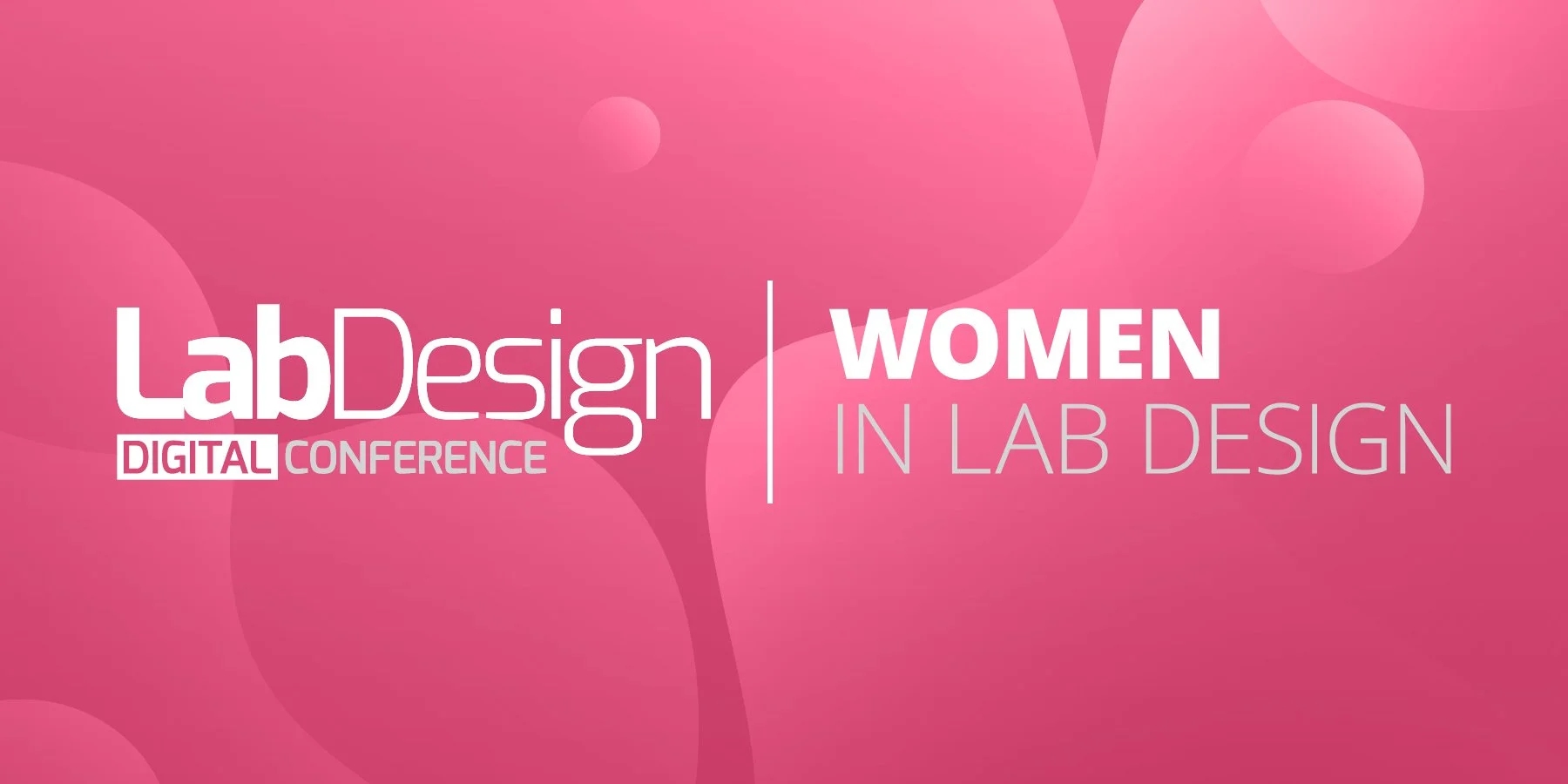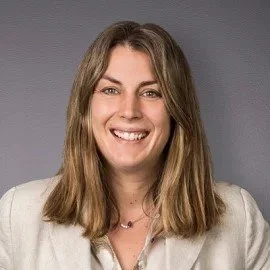Designing Change: How Women in Lab Design Are Building Inclusive Futures
"Flexibility, Visibility, Camaraderie: Redefining Opportunities for Women in Lab Design” is available for free on demand viewing. Register now to view this webinar!
A panel of laboratory design professionals from HDR’s Australia offices, alongside representatives from the University of Sydney and Wentworth Capital, participated in Lab Design’s Women in Lab Design Digital Conference in February 2025. During their session, titled "Flexibility, Visibility, Camaraderie: Redefining Opportunities for Women in Lab Design," the panelists shared what inspired them to engage in this critical conversation.
With backgrounds spanning architecture and science, the panelists reflected on the unique—and often non-linear—career paths that led them into the niche field of laboratory planning and design in Australia. Despite early gender parity in education, women remain underrepresented in senior roles across the industry. The discussion shed light on how HDR Australia’s Science team is actively challenging that status quo by fostering flexible work models, virtual collaboration, and a culture that prioritizes visibility, support, and mentorship.
This webinar is available for free on demand viewing. Register now to view this webinar!
Lab Design News spoke with HDR’s Amy Papas, Associate Director, Professional Associate, and Laboratory Planner (EdSci); Simone Benvenuti, Senior Laboratory Planner; and Cintia Mistro, Senior Associate, tabout their experience participating in the Women in Lab Design Digital Conference panel and their reflections on the discussion during the webinar.
Inclusive lab design to empower the next generation
Amy Papas, Associate Director, Professional Associate, Laboratory Planner (EdSci), HDR
The panelists spoke candidly about their motivations for joining the conversation, emphasizing the importance of raising awareness about lab design as a rewarding, albeit lesser-known, career path. For many, the goal was to inspire others—especially women—to pursue nontraditional roles in architecture and STEM. “The key point of view of ‘You can't be what you can't see’ is really important,” says Papas. “In Australia, in particular, lab design is a really small industry, and it's generally an unknown career path for architects or even engineers, for that matter, starting out. And I'm really grateful that lab design and lab planning is something that I have found passion in.” The lab design field, says Papas, has provided a network and a platform for her to fast-track her career goals in architecture, and she feels it is important to share that story with as many people as possible in order to reassure them that there is no one set way to be an architect. “There's just so many possibilities in this as a career,” she adds.
Their conversation also explored the broader implications of gender representation in professional spaces. Mistro reflected on the subtle, systemic challenges she had faced over the years, including inappropriate behavior and gender-based assumptions that had nothing to do with her capabilities. “Those conversations are not written and, if anything, they're more necessary than ever,” she says. “We need to keep talking about it. We need to keep improving. We need to keep learning about culture, learning about what is okay and what is not okay so we can create work environments that are safer for people to thrive.”
Benvenuti emphasized the architect’s unique influence on both the physical and cultural environment of a workplace, noting that the wider conversation around gender representation needs to take place in lab design itself in how services and facilities, as well as a campus itself, can help create a culture of inclusion. “It could be around visibility. It could be around creating culturally safe environments from a physical perspective. So I guess by participating the conversation, really hoping to highlight how, how those spaces, physical spaces, can really reflect the broader societal values and and ultimately also impact career development, because for underrepresented genders in as a scientific field, to make sure that they're wanting to come to an area that they feel safe in, I think is really important, and ensuring about that all individuals, regardless of their gender, have an opportunity to thrive their access resources and feel included and valued.
By designing inclusive, culturally safe spaces, she says, we can empower underrepresented individuals in STEM fields to fully participate and succeed. The message is clear: inclusion begins with visibility, flourishes through community, and thrives in environments where individuals are encouraged to bring their whole selves to work.
Through personal storytelling, each speaker illustrated the transformative power of representation, and noted that many attendees later expressed how validating it was to hear different career journeys, and how those stories made them feel seen, supported, and inspired. “I actually had a colleague reach out after the panel to say how much they appreciated hearing our stories,” says Papas, adding that visibility and just hearing what other people have to say resonates with people. “Representation makes people feel seen and validated,” she says.
Cintia Mistro, Senior Associate, HDR
The panelists stressed that building an inclusive environment starts with small, intentional steps: finding open-minded allies, advocating for flexibility, and being mindful of how our behavior shapes team culture. Even in workplaces that aren’t yet fully supportive, progress is possible through honest, respectful dialogue.
They also underscored the value of participation and community. Events such as the Women in Lab Design Digital Conference can spark mentorships, foster international connections, and support career development—if individuals are willing to step outside their comfort zones. Ultimately, the hope is that attendees walked away with not just a deeper understanding of the challenges women face in lab design, but also practical tools and encouragement to cultivate more inclusive, empowering workplaces.
Addressing persistent gender disparities in lab design—especially in senior leadership—requires companies to take deliberate, practical actions across the employee lifecycle. “There are a lot of practical things that, I think, companies can do, but it comes down to really creating those opportunities from the very beginning when you're hiring people,” says Mistro. One effective starting point, she suggests, is to remove bias from hiring by anonymizing resumes, helping ensure candidates are judged on merit rather than gender, ethnicity, or background.
But equity work cannot stop at recruitment, she adds: “When you are promoting, who are you promoting? What are you promoting based on?” Promotions must be grounded in transparent, performance-based criteria—not subjective familiarity or unconscious bias, which too often favors those who resemble current leadership.
Representation, community, and action
Fostering an inclusive workplace culture is equally vital. “For me, it's really about making sure that the strategies are actually tangible actions that you can then measure and track,” says Benvenuti. When senior leaders visibly model work-life balance—by openly taking time for caregiving or personal responsibilities—it signals to all employees that flexibility is acceptable, not exceptional. These cultural cues empower women and other underrepresented groups to succeed on their own terms. Encouraging personal connection through team traditions, like sharing stories during meetings, helps build empathy and trust across diverse teams.
Simone Benvenuti, Senior Laboratory Planner, HDR
Celebrating cultural diversity through events tied to global holidays also plays a powerful role in affirming identity and promoting cross-cultural understanding. And none of these efforts will have lasting impact without measurement. Tracking gender pay equity, promotion rates, and other diversity metrics enables organizations to set clear goals, monitor progress, and stay accountable.
For women entering the lab design and construction fields today, one of the most valuable pieces of advice is to seek out an advocate—someone who sees your potential and is willing to support your growth. Whether it’s a mentor, a peer, or a former supervisor, these relationships offer both encouragement and opportunity. Reconnecting with mentors from earlier stages in your career can also be a lasting source of guidance. “It's so important to find your advocate, that person that you can trust to have really honest conversations about work or your personal life, and they can help you make connections,” says Papas. “It might be one person, it might be multiple people, and it might change over your career, but when you find that person, hang on to them because they're just so valuable over the course of your career progression.”
Papas adds, “Speaking on the panel actually inspired me to reach out to an old mentor of mine, and it was such a pleasure to reconnect.”
Equally important is embracing your own voice. Your background, insights, and experiences bring unique value to every team and project. It’s normal to feel uncertain in male-dominated spaces—but confidence grows with use. Speaking up is a skill, and it’s one worth practicing. Give yourself permission to be imperfect. You don’t need to have all the answers to have a seat at the table.
And most of all, stress the panelists, remember that you belong. Whether you’re the only woman in the room or navigating spaces that weren’t built with you in mind, your presence matters. You’re not just participating—you’re paving the way. Reframe any perceived disadvantage as a source of strength. And be gentle with yourself, they encourage. Many women set impossibly high standards for themselves. If you wouldn’t criticize someone else for an accent, a misstep, or a question, don’t do it to yourself, they urge.
Concludes Papas, “ If you're passionate about something, don't let anyone stand in your way."
This webinar is available for free on demand viewing. Register now to view this webinar!




